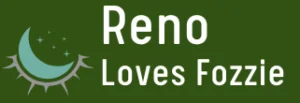In a world overflowing with information, mastering the art of note-taking can feel like trying to find a needle in a haystack. With lectures, meetings, and endless podcasts, it’s no wonder many find themselves drowning in a sea of scribbles. But fear not! There’s a treasure trove of note-taking methods that can turn chaos into clarity.
Table of Contents
ToggleOverview of Note-Taking Methods
Various note-taking methods enhance information retention and organization. The Cornell Method promotes a structured approach, dividing the page into sections for cues and summaries. In this method, participants actively process information during lectures, leading to better recall.
The Mind Mapping technique employs visual elements, allowing users to create diagrams that represent connections among ideas. This method encourages creativity and helps individuals grasp complex topics more easily.
Outline Method stands out for its hierarchical structure. Users list main topics followed by supporting details, creating a clear linear flow of information. This method suits well-organized lectures and meetings.
With the Charting Method, visual learners benefit from organizing information into columns and rows. This approach aids in comparing data, making it useful for subjects like history or statistics.
The Sentence Method captures information in a free-flowing form, where each new thought starts on a new line. This method supports rapid note-taking, ideal for fast-paced environments.
Lastly, the Digital Note-Taking trend leverages technology to store and organize information efficiently. Utilizing apps for tablets or laptops promotes flexibility and accessibility, allowing for easy edits and searches.
Selecting the appropriate method aligns with personal preferences and learning styles, making the note-taking process more effective. Individuals can tailor their approach to fit specific contexts, enhancing overall comprehension.
Traditional Note-Taking Techniques


Traditional note-taking techniques provide effective ways to organize and retain information. Various methods exist to suit different learning styles and situations.
Cornell Method
The Cornell Method entails dividing the page into three sections: cues, notes, and summary. Notes occupy the largest section, where individuals record detailed information during lectures. Cues serve as prompts for key concepts, located in the left column. Summaries, positioned at the bottom, consolidate learning and enhance recall. This structured approach promotes active engagement with the material, fostering better comprehension and memory retention.
Outline Method
The Outline Method organizes information hierarchically. It employs main topics and subtopics, creating a clear flow of ideas. Each level of the outline expands on the previous one, making it easier to follow complex structures. This method lends itself well to lectures that progress logically, allowing for efficient note-taking. Individuals can easily identify relationships between concepts through indentation, enhancing understanding and recall.
Digital Note-Taking Methods
Digital note-taking methods streamline the process of capturing and organizing information through technology. Numerous tools and techniques facilitate efficiency and accessibility.
Note-Taking Apps
Note-taking apps serve as essential tools for tech-savvy individuals. Popular options include Evernote, OneNote, and Notion, each offering unique features for organization. Evernote excels in document scanning and web clipping, making it versatile for research. OneNote provides a grid for freeform layout, ideal for creatives. Notion combines task management with note-taking, allowing seamless integration of to-do lists and notes. Users can categorize notes with tags or folders, enhancing retrieval. Syncing features across devices ensures access, whether on a laptop or smartphone.
Audio Recording
Audio recording stands out as an efficient note-taking method for lectures and meetings. This technique captures spoken content accurately while allowing users to focus on listening. Applications like Otter.ai and Google Recorder transcribe speech into text, enabling easy review later. The capability to add timestamps and highlights aids in revisiting critical points quickly. With audio files stored digitally, students and professionals can organize their content without worrying about physical notebooks. This method significantly benefits auditory learners who retain information better through listening rather than writing.
Visual Note-Taking Methods
Visual note-taking methods effectively enhance understanding and retention through the use of images and diagrams. These techniques cater to various learning styles, making information more accessible.
Mind Mapping
Mind mapping visually organizes thoughts and ideas. Central themes anchor the map, allowing related concepts to branch off in various directions. This method promotes a nonlinear approach, encouraging creativity while illustrating relationships between topics. Users often find colors and images useful for enhancing memorization. Studies show that mind mapping can improve recall by 10% to 15% compared to traditional notes. Including keywords helps simplify complex topics, making them easier to grasp.
Sketch Notes
Sketch notes combine doodles, diagrams, and text to capture information visually. This method engages both the mind and the drawing hand, enhancing retention. Using simple illustrations alongside written words helps reinforce concepts. Individuals often find sketch notes appealing because they allow freedom in representation, fostering personal expression. The visual elements facilitate quicker reviews of the material. Research indicates that incorporating visuals in notes can lead to better comprehension and memory retention.
Hybrid Note-Taking Strategies
Combining traditional methods with digital tools enhances note-taking efficiency. Students and professionals benefit from integrating techniques like the Cornell Method with apps like Notion. This synergy supports structured notations while utilizing technology for quick access and organization.
Visual elements play a crucial role in hybrid strategies. Mind mapping often integrates with digital tools to create interactive diagrams. Sketch notes can be enhanced with digital drawing tools, allowing users to elaborate on visual ideas and streamline sharing capabilities.
Utilizing a blend of strategies becomes beneficial for various learning styles. Creating a digital outline with hierarchical structures allows for easy adjustments as new content surfaces. Individuals can combine the Charting Method with Excel spreadsheets to visualize data comparisons effectively.
Incorporating audio tools alongside written notes aids in reinforcing information retention. Recording lectures with Otter.ai empowers auditory learners while simultaneously taking notes in a structured format. Transcripts generated by such tools make reviewing content simpler.
Adopting a hybrid approach promotes flexibility in the note-taking process. Students can experiment with combining different methods, ultimately finding a personalized style that enhances comprehension. A digital sketching tool facilitates the inclusion of diagrams, further enriching the note-taking experience.
Overall, hybrid note-taking strategies merge the best of various techniques, creating a versatile system for capturing and organizing information. This method ensures that users exploit their preferred learning styles while maximizing the advantages of both traditional and digital resources.
Effective note-taking is essential for navigating today’s information-rich environment. By exploring various methods like the Cornell Method Mind Mapping and digital tools individuals can find the approach that best suits their learning style. Each technique offers unique advantages that enhance retention and organization.
Incorporating visual elements and hybrid strategies further enriches the note-taking experience. Adapting these methods not only improves comprehension but also empowers learners to engage actively with the material. Ultimately the right note-taking strategy can transform chaotic information into structured knowledge, making learning more efficient and enjoyable.




